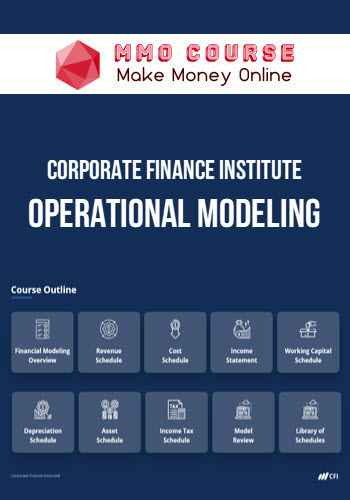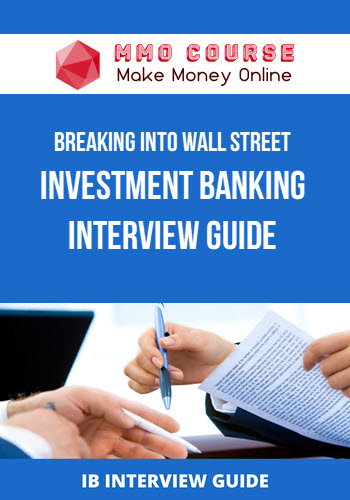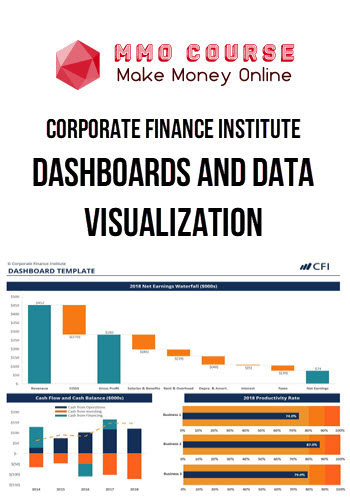Breaking Into Wall Street – Venture Capital & Growth Equity Modeling
$197.00 $85.00
Delivery: Within 24 hours
Description
Breaking Into Wall Street – Venture Capital & Growth Equity Modeling

How to Master Cap Tables, Startup Valuation, and Exit Modeling – So You Can Ace Your Venture Capital and Growth Equity Interviews and Advance to the Top
- Evaluate companies and deals like a pro
You’ll understand cap tables, startup/growth valuations, and exits - Master financial modeling
You’ll build forecasts and analyze metrics for tech and biotech startups - Complete 9 case studies
You’ll learn the numbers and how to make investment recommendations
Let’s cut to the chase: There are quite a few venture capital and growth equity courses on the market, but most of them miss the mark because they do not teach what you need to know for interviews and case studies.
Most “courses” use one of the following (wrong) approaches:
Wrong Approach #1: Heavy Focus on Term Sheets – It’s good to know about the common legal and control terms in deals, but no VC or growth equity fund will test you based on these; they care mostly about your ability to evaluate investments. If they wanted summaries of written documents, they could pay an overpriced lawyer or ask ChatGPT!
Wrong Approach #2: Generic 3-Statement Models and Valuations – The problem here is that these models are not specific to what you do in venture capital and growth equity. Sure, it’s good to know how to build a basic 3-statement model… but it doesn’t matter unless you know how to use it to make an investment recommendation.
The correct approach – the one our course uses – is based on real-life case studies given in interviews.
Before creating this course, we gathered dozens of case study examples from students and readers who had been through VC, GE, and related interviews, and we synthesized the best parts into the course materials.
The goal was to highlight the most important points while “trimming the fat.”
Our approach focuses on the 3 most important points in venture capital and growth equity interviews:
- The Numbers – You need to know the cap table math and financial analysis around a company’s growth and potential exit, so each case study here covers that.
- The Market – But it’s equally important to understand the market, including why a company’s product might succeed or fail, its pricing and potential sales, and how it differentiates itself from competitors.
- The Recommendation – Finally, you need to understand how to put together all the pieces to make an investment recommendation. You must be able to look at a company and its financial, product, and market information and say “Yes” or “No.”
What You’ll Learn In Venture Capital & Growth Equity Modeling
- Analyze a startup’s market and customers, including cohort analysis for Software as a Service (SaaS) companies.
- Build capitalization tables (cap tables) for Seed and Series A – C funding rounds.
- Model the impact of liquidation preferences, employee option pools, participating preferred (capped and uncapped), and more.
- Discern if a startup’s financial forecasts are credible or closer to a fantasy novel.
- Understand how “down rounds” and terms like anti-dilution and pay-to-play affect exits and investment results.
- Value tech and biotech companies based on multiples and the DCF, with adjustments for “key person” risk, illiquidity, and more.
- Explain how biotech and tech startups differ and how that translates into valuation, cap table, and exit differences.
- Evaluate different deal structures, such as SAFE Notes vs. priced equity rounds, and the trade-offs between valuations and downside protection for the investors.
- Value biotech startups with a Sum-of-the-Parts DCF that analyzes each drug’s potential separately.
- Build advanced cap tables with support for features such as convertible notes, venture debt, pro-rata equity, anti-dilution provisions, participating preferred, and pari passu vs. ranked seniority.
- Make investment recommendations based on everything above, factoring the qualitative and quantitative factors.
Sale Page: Breaking Into Wall Street – Venture Capital & Growth Equity Modeling
Delivery Policy
When will I receive my course?
You will receive a link to download your course immediately or within 1 to 21 days. It depends on the product you buy, so please read the short description of the product carefully before making a purchase.
How is my course delivered?
We share courses through Google Drive, so once your order is complete, you'll receive an invitation to view the course in your email.
To avoid any delay in delivery, please provide a Google mail and enter your email address correctly in the Checkout Page.
In case you submit a wrong email address, please contact us to resend the course to the correct email.
How do I check status of my order?
Please log in to MMOCourse account then go to Order Page. You will find all your orders includes number, date, status and total price.
If the status is Processing: Your course is being uploaded. Please be patient and wait for us to complete your order. If your order has multiple courses and one of them has not been updated with the download link, the status of the order is also Processing.
If the status is Completed: Your course is ready for immediate download. Click "VIEW" to view details and download the course.
Where can I find my course?
Once your order is complete, a link to download the course will automatically be sent to your email.
You can also get the download link by logging into your mmocourse.hk account then going to Downloads Page.
Related products
Total sold: 1
Total sold: 1









